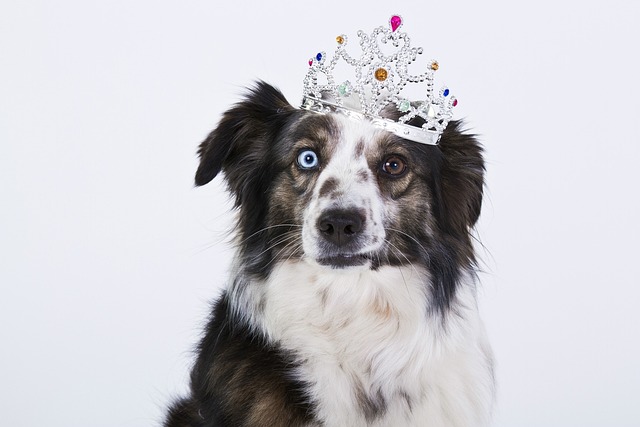
Can I give my dog CBD chews every day
Picture this: You’re curled up on your San Francisco apartment couch, watching your rescue mutt, Charlie, tremble during a thunderstorm.
As a canine health specialist who's worked with countless dogs over the years, I can tell you that ear infections are one of the most frustrating conditions both pets and their owners face. You know that telltale head shake, the pawing at ears, and that distinct odor that makes you wrinkle your nose? Those are the calling cards of dog ear infections, and trust me, they're far more complex than most people realize.
Dog ear infections don't just happen overnight. They're the result of a perfect storm of factors that create an environment where bacteria, yeast, or other pathogens can thrive in your pup's ears. While many pet parents think these infections are simply bad luck, the reality is that understanding the underlying causes can help you prevent most cases from ever occurring.
The anatomy of a dog's ear plays a crucial role in infection susceptibility. Unlike our straight ear canals, dogs have L-shaped ear canals that naturally trap moisture, debris, and allergens. When the delicate balance of your dog's ear environment gets disrupted, it creates the perfect breeding ground for harmful microorganisms. You'll typically notice symptoms like excessive scratching, head shaking, brown or yellow discharge, redness, swelling, and that unmistakable musty smell.
What catches many owners off guard is how bacterial and yeast infections can develop from seemingly minor irritations. Yeast infections often produce that sweet, musty odor and dark, waxy discharge, while bacterial infections tend to create a more pungent smell with yellow or green discharge. Sometimes, you're dealing with both simultaneously, which is why proper veterinary diagnosis is essential.
Now, here's where things get interesting – and where many pet owners miss the mark. Environmental causes of dog ear infections are often the silent culprits that set the stage for more serious problems. Humidity levels in your home, for instance, can make or break your dog's ear health. During those sticky summer months, I've seen infection rates spike dramatically because moisture becomes trapped in ear canals, creating an ideal environment for pathogens to multiply.
Swimming presents another environmental challenge that many dog owners don't fully appreciate. While your water-loving retriever might adore those lake adventures, each swim session introduces moisture and potentially harmful bacteria directly into the ear canal. Lake water, in particular, can harbor parasites and bacteria that your dog's ears weren't designed to handle. Even chlorinated pool water can disrupt the natural pH balance of your dog's ears, leading to irritation and subsequent infection.
Seasonal allergens deserve special attention because they create a domino effect that often leads to ear infections. When your dog's immune system is already fighting environmental allergens like pollen, dust mites, or mold spores, their ears become more susceptible to secondary infections. The constant inflammation from allergic reactions creates microscopic wounds in the ear canal, providing entry points for bacteria and yeast.
Your grooming habits – or lack thereof – can also contribute to environmental causes of dog ear infections. Over-cleaning with harsh products strips away beneficial oils and disrupts the ear's natural defense mechanisms. Conversely, neglecting ear hygiene allows wax, debris, and moisture to accumulate, creating that perfect storm I mentioned earlier.
Behavioral factors in dog ear infections represent another often-overlooked piece of the puzzle. Dogs are remarkably good at creating their own problems when it comes to ear health. That frantic scratching your dog does when their ears feel itchy? It's actually making things worse by creating micro-tears in the delicate skin of the ear canal, providing perfect entry points for bacteria.
Head shaking, while a natural response to ear irritation, can cause serious damage when it becomes excessive. I've seen cases where vigorous head shaking has led to hematomas – blood-filled swellings in the ear flap – that require surgical intervention. More commonly, the constant motion just spreads infection deeper into the ear canal and prolongs healing time.
Some dogs develop compulsive ear-scratching behaviors, especially breeds prone to anxiety or stress. These psychological factors can turn a minor ear irritation into a chronic infection cycle that's incredibly difficult to break. The stress itself can compromise your dog's immune system, making them more susceptible to infections in the first place.
Foreign objects present another behavioral challenge. Curious dogs, particularly puppies, sometimes get grass seeds, small toys, or other debris lodged in their ears during play. While the initial insertion might be accidental, the subsequent scratching and head shaking to remove the irritant often pushes it deeper and creates additional trauma to the ear canal.
Preventing dog ear infections requires a holistic approach that addresses both environmental and behavioral factors. The good news is that most ear infections are entirely preventable with the right strategy and consistent care. Regular ear cleaning should be part of your routine, but – and this is crucial – you need to do it correctly.
Use only veterinarian-recommended ear cleaners that are specifically formulated for dogs. Human products can be too harsh and actually cause more harm than good. The technique matters too: never insert anything into your dog's ear canal. Instead, fill the ear with cleaning solution, massage the base of the ear gently, then let your dog shake their head to help dislodge debris.
Environmental management plays a huge role in prevention. If your dog loves swimming, make ear drying a post-swim ritual. You can use a soft, dry cloth to gently wipe the outer ear, or better yet, use a dog-specific ear drying solution. For dogs prone to allergies, consider using air purifiers in your home and washing their bedding regularly in hypoallergenic detergent.
Managing humidity levels in your home can make a significant difference, especially for dogs with naturally floppy ears that trap moisture. During humid seasons, ensure good air circulation in areas where your dog spends time. Some owners find that using dehumidifiers in particularly humid climates helps reduce infection rates.
Nutrition plays a surprising role in ear health. Dogs with food allergies often develop ear infections as a secondary symptom. If your dog has recurring ear problems, consider working with your veterinarian to identify potential food allergens. Omega-3 fatty acids, whether from fish oil supplements or incorporated into their diet, can help maintain healthy skin and reduce inflammation.
Behavioral modifications are equally important. If your dog is prone to excessive scratching, consider using an Elizabethan collar during flare-ups to break the itch-scratch cycle. Address underlying anxiety or stress that might be contributing to compulsive behaviors. Sometimes, simply providing more mental stimulation through puzzle toys or training sessions can redirect nervous energy away from ear scratching.
Regular grooming appointments can be invaluable for preventing ear infections, especially for breeds with heavy ear hair that traps moisture and debris. Professional groomers can safely remove excess hair from the ear canal and identify early signs of problems that you might miss at home.
Knowing when to seek veterinary help is crucial for preventing minor ear issues from becoming serious infections. Don't wait if you notice persistent head shaking, strong odor, dark discharge, or visible pain when touching your dog's ears. These symptoms warrant immediate professional attention.
Any discharge – whether it's brown, yellow, green, or bloody – should be evaluated by a veterinarian. The color and consistency can help determine the type of infection and appropriate treatment. Similarly, if your dog's ear appears swollen, red, or feels hot to the touch, these are signs of significant inflammation that requires medical intervention.
Behavioral changes often signal ear problems before physical symptoms become obvious. If your normally social dog becomes withdrawn, stops eating, or seems generally uncomfortable, ear pain might be the culprit. Dogs are masters at hiding discomfort, so subtle changes in behavior should never be ignored.
Perhaps most importantly, never attempt to treat what you suspect is an ear infection without veterinary guidance. While over-the-counter ear treatments might seem convenient, using the wrong product can actually make infections worse or mask symptoms of more serious conditions. Your veterinarian needs to examine the ear canal, potentially take cultures to identify the specific pathogen, and prescribe appropriate treatment.
Chronic or recurring ear infections often indicate underlying issues that require professional diagnosis and treatment. These might include hormonal imbalances, autoimmune conditions, or structural abnormalities that predispose your dog to infections. Early intervention not only resolves the immediate problem but also helps identify and address these underlying factors.
Understanding how dogs get ear infections empowers you to be proactive about your pet's health. By recognizing the environmental triggers, managing behavioral factors, and maintaining consistent preventive care, you can significantly reduce your dog's risk of developing these uncomfortable and potentially serious infections. Remember, your dog's ears are windows to their overall health – keeping them clean, dry, and infection-free is one of the best investments you can make in their long-term well-being.

Picture this: You’re curled up on your San Francisco apartment couch, watching your rescue mutt, Charlie, tremble during a thunderstorm.

Watching your dog's behavior change without understanding the cause feels like walking in the dark. When a dog's kidneys start shutting down, their body sends out distress signals through shifts in daily habits, energy levels, and physical cues.

Watching your dog slow down on walks or struggle to jump onto the couch tugs at the heartstrings. Degenerative joint disease, often called arthritis, is a common condition that can rob our furry friends of their mobility.

When your dog’s energy suddenly drops or they start drinking more water than usual, it’s easy to feel a knot of worry. Kidney disease, a silent but serious condition, often creeps up without warning.

If you’re a first-time puppy parent in Texas, you’ve probably watched your tiny ball of energy lap up water like it’s their job—then panicked: Is this too much?

Discovering your dog has elevated urea levels can feel like a gut - punch. High urea, often a sign of kidney or liver stress, can’t be ignored.